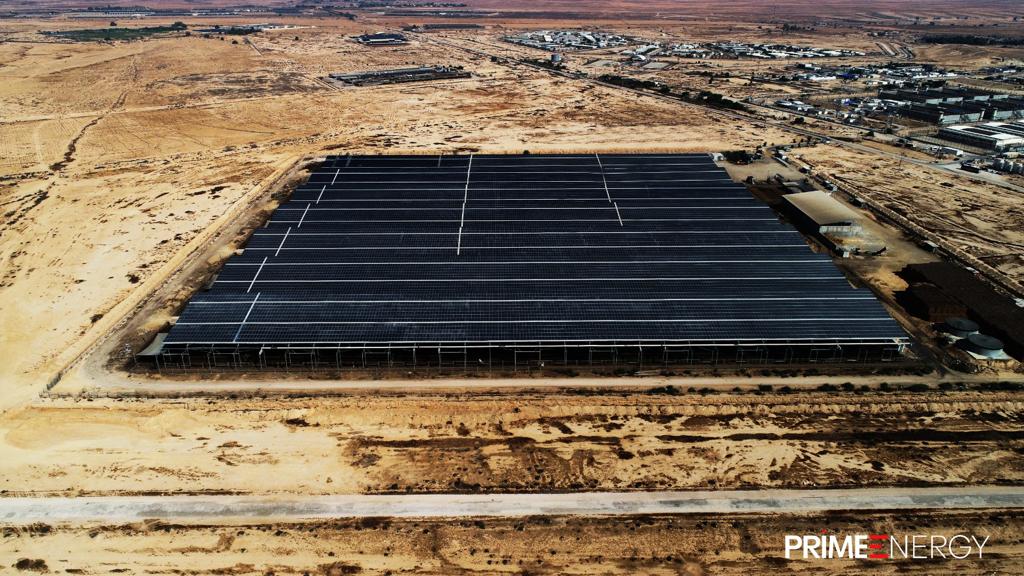Solar PV may represent the main pillar of Israel’s electrical system in 2050, especially if combined with energy storage and vehicle-to-grid (V2G) technologies.
This is the main conclusion of new research from Afeka Tel-Aviv Academic College of Engineering that expects PV to cover at least three-quarters of the country's electricity demand by the end of the first half of the century.
In the study “The potential of renewable electricity in isolated grids: The case of Israel in 2050,” published in Applied Energy, the research team estimated that Israel may offer a total area of 1,129 km2 for solar energy deployment, most of which is located in the Galil Golan and the Negev regions.
The research did not include an economic assessment of the potential transition, stating uncertainties regarding cost evaluations as well as micro and macro-level developments. Gur Mittelman, the corresponding author, highlighted macro-level variability as the main reason for avoiding an economic analysis.
“From the state’s point of view, the transition to renewables is far exceeding the scope of the energy economy,” Mittelman told pv magazine. “This fundamental observation is missed by many researchers who only try to compare the fossil electricity cost versus the costs of renewable energy plus storage”.
Available land for PV
This availabe surface, according to the scientists, offers the technical potential for deploying 172.5 GW of photovoltaics, of which 132.1 GW may come from conventional installations, and 40 GW may be from agrivoltaics. If deployed, this huge amount of solar power would require energy storage with a combined capacity of 500 GWh. Intensive storage capacity would be required to compensate for the intermittent nature of solar energy. “Peak demand in Israel usually occurs in the evening,” they said.
They also estimated the country's total electric demand for the year 2050, including electromobility, at 183.3 TWh and considered vehicle-to-grid (V2G) as a major source of storage. “In the V2G concept, the battery cost is actually embedded, or sunk,” Mittelman added. “There is a need for smart charging stations infrastructure, which are expected to be developed anyway as more and more electric vehicles are predicted to enter the market”.
Electromobility
The team assumed Israel may have 7 million electric vehicles (EVs) circulating in 2050, of which 6.6 million battery electric vehicles (BEVs) and 0.4 million plug-in hybrid electric vehicles (PHEVs), with their respective battery sizes being 75 kWh and 15 kWh, which in turn would result in a theoretical V2G capacity of 501 GWh.
It calculated an annual mileage of 16,200 km for the private sector and a fuel economy of 180 and 200 Wh/km for BEVs and
PHEVs, respectively, with annual demand in the private sector being 20.5 TWh, and 22.7 TW with the addition of public EVs.
Scenarios
The study predicts under its “more realistic” scenario that 80% of Israel's 2050 electrical mix could be based on renewable energy, with around 57.6% being covered by conventional solar PV and 17.6% by agrivoltaic solutions. The remaining minimal share of renewables would be covered by wind, sea wave energy and other minor sources. Solar would use only half of the area available for deployment and the total energy storage capacity needed would amount to 216 GWh.
The most optimistic and less likely scenario provided by the study predicts solar may reach an 88% share of the country's electricity mix by 2050, with the storage capacity reaching its maximum potential of 500 GWh.
Another mid-term scenario also projects that solar may reach a 47% share by 2030, with storage capacity reaching 60 GWh.
“To our best knowledge, several energy resources, such as agrivoltaics and sea waves in Israel, were analyzed in detail for the first time,” the scientists concluded, referring to the novelty of their work. “Thus, the current work could be referred as a roadmap for the future Israeli electricity sector. “
This content is protected by copyright and may not be reused. If you want to cooperate with us and would like to reuse some of our content, please contact: editors@pv-magazine.com.



2 comments
By submitting this form you agree to pv magazine using your data for the purposes of publishing your comment.
Your personal data will only be disclosed or otherwise transmitted to third parties for the purposes of spam filtering or if this is necessary for technical maintenance of the website. Any other transfer to third parties will not take place unless this is justified on the basis of applicable data protection regulations or if pv magazine is legally obliged to do so.
You may revoke this consent at any time with effect for the future, in which case your personal data will be deleted immediately. Otherwise, your data will be deleted if pv magazine has processed your request or the purpose of data storage is fulfilled.
Further information on data privacy can be found in our Data Protection Policy.